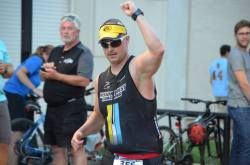Many athletes have faced some time away from competition and even training. It may have been for many reasons. Lack of interest, busy career and starting a family are a few of the more common challenges. So now you’re interested in getting back in shape, picking some goals and maybe even competing. The question that ultimately needs to be asked and what most athletes want to know is: “How long will it take and how good can I become?”
No matter the circumstances that led to a layoff, there just isn’t an easy answer to this question. In general terms, the shorter the layoff and the younger the athlete upon returning, the more success will be had. Older athletes and those with a longer layoff will have a harder time getting back. That is not meant to be discouraging, but it is the reality. Accepting that and setting realistic expectations is a key part of a successful return to sport.
The most important element is patience. Most people who have been athletic in their past have some memory of what it felt like to be on top of their game. How it felt to ride, run or swim fast, as well as the “good” feeling derived from working hard. When you return to exercise, you’re not likely to feel those sensations right away. Hard is just going to be hard.
Our memories also tend to reduce the time it took to reach peak fitness the first time. It was likely the culmination of over four years of fairly consistent training, sometimes in multiple sports over different seasons. With this in mind, it’s not fair to expect you’ll be back to your best in a few months. Returning athletes will certainly see real progress within the first weeks and months, but it may take a full season or more to get back to some of the same feelings you remember.
Consistency and moderation will be the best course of action. You may want to start out a little slowly to minimize injury, but after a few weeks of reintroduction, you should be able to ramp up pretty quickly to the maximum volume your non-training schedule will reasonably allow. That usually means six to ten hours, and the benefits of spending more time (in the eight- to ten-hour end of that range) are noticeable.
Cycling and swimming are both low-impact activities and increases in volume should be well received most of the time. Running includes a lot more pounding, making it prudent to progress back more gradually, building up your durability with short, frequent runs before trying to include long runs. For all workouts, limiting intensity mostly to the aerobic range (easy to moderate pace) will permit rapid increases in volume and help to rebuild an endurance base. This system takes the longest to develop and is most taken for granted once it’s in place, so be sure to build a strong foundation to support more intense workouts.
Just as with volume, cycling and swimming should be the first places to introduce some intensity back into your routine. Specifically dosed training using power or pace helps ensure the different energy systems are being effectively targeted. Many athletes may not need any intensity on the run at all. Faster running speeds lead to increased impact and greater risk of injury. So unless you’re racing short events where running speed is crucial, the benefits may not match the risk.
Even though you may not feel ready, set some goals for your first season back. Rather than performance goals, set them as process goals to focus on successful execution without concerning yourself with speed or finish place. A few goals will motivate you to stick to the training plan and provide useful feedback on your progress. And remember to be patient and work consistently. Soon you’ll find yourself back in the shape you remember.

